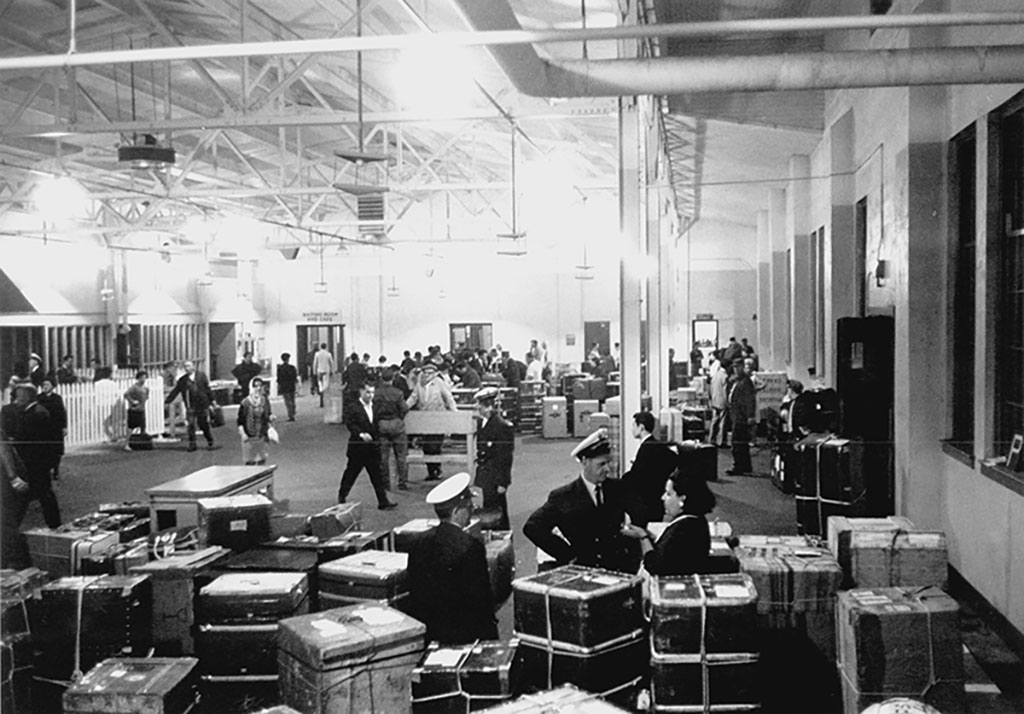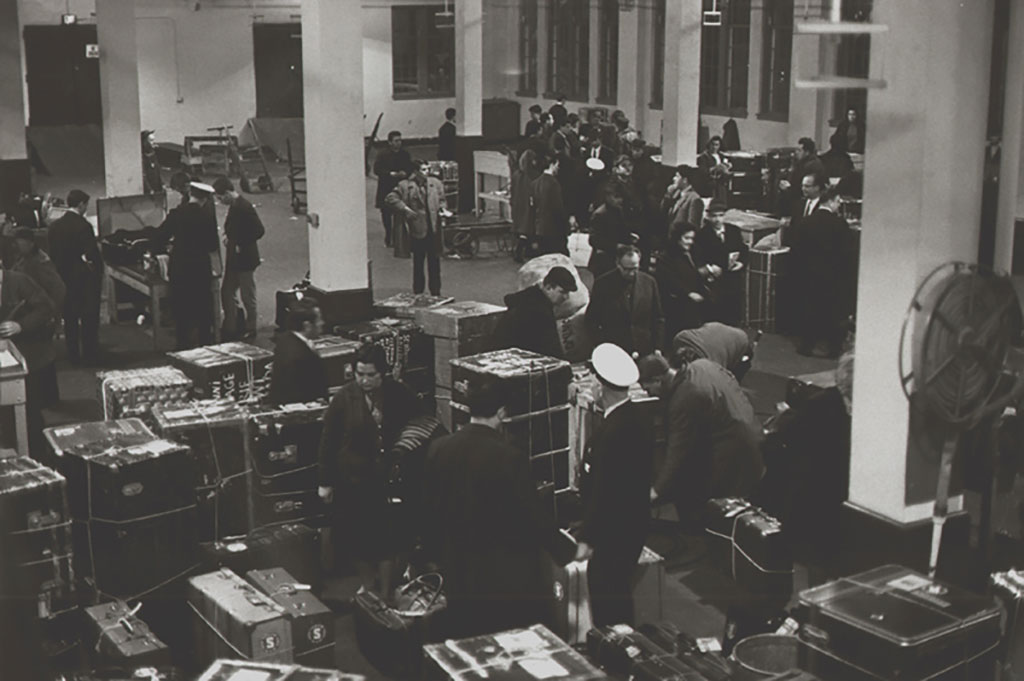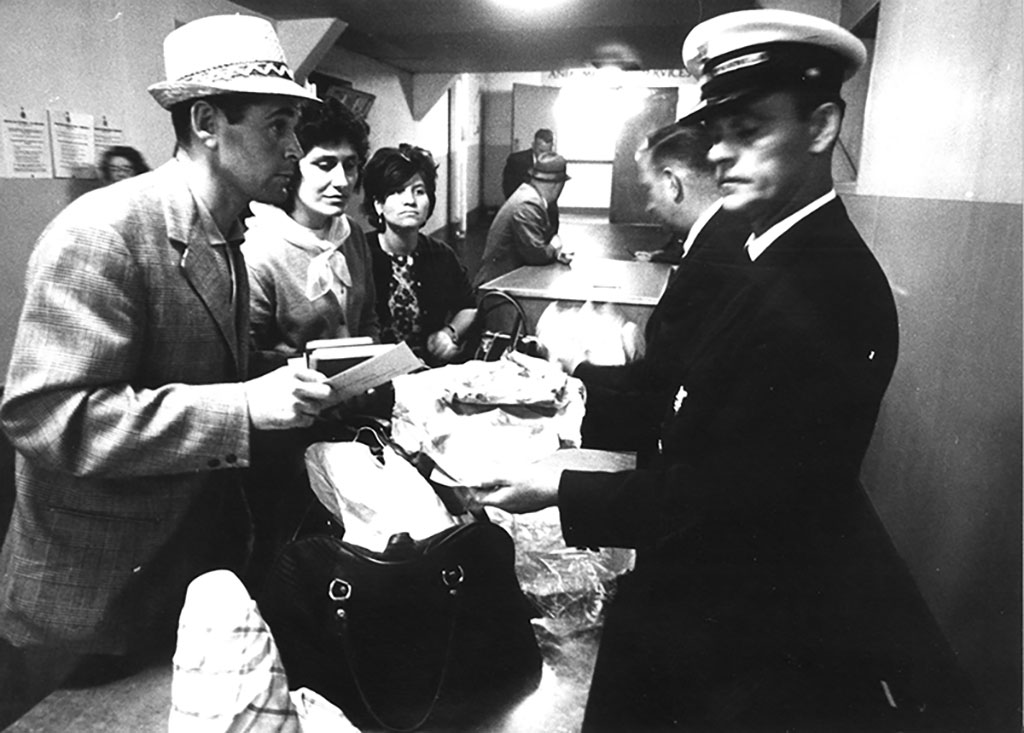by Jan Raska, PhD, Historian
(Updated October 2, 2020)
Introduction
My last blog, Anything to Declare? Part 1 - Immigration and Customs since Confederation, introduced the historic role of customs officials in Canada and shared some of the amusing and odd anecdotal inquiries received from travellers. This blog continues the examination of the role of customs as a vital part of a newcomer’s experience in Canada through the firsthand accounts of a former Canada Customs officer at Pier 21 and of immigrants who passed through here.
First-Hand Accounts of the Customs Experience at Pier 21
As a Canada Customs officer during the postwar period, Arthur Vaughan witnessed many immigrants come through Pier 21 before boarding trains for their final destinations across Canada. Vaughan notes that
The arrival of the Displaced Persons brought scenes in stark contrast to those of the cheerful, chattering war brides. It is difficult to comprehend what those desperate souls had endured through man’s inhumanity to man. They came with almost no items of value; their few belongings were carried in sacks of various kinds and a few battered cardboard suitcases, these people came from many walks in life; farming, industrial trades, merchandising and, in many cases, professional fields. The ravages of war had taken away their homes, their livelihood and, in too many instances, their loved ones. They brought their skills with them and a burning hope for a new life devoid of oppression and deprivation. As may be imagined, there was very little work for the customs staff and we knew that we would be working merely as aides to help them through the required procedures.[1]
In May 1951, Czech Displaced Person Milan V. Gregor arrived at Pier 21 aboard MS Nelly. Gregor recalls that “each emigrant was allowed two pieces of luggage with a limited weight. Being single at that time, I had only one small suitcase. A countryman of mine with a wife and child asked me in Germany, if I would bring to Canada under my name one of his trunks. I agreed. After we disembarked and entered the huge customs hall with Welcome to Canada on the wall in many languages, we each faced a customs officer standing at a low slanted table. Each immigrant had to empty his pockets and place the contents on that table. Then he/she had to open the luggage. When I opened the trunk, I froze, because staring at me was a woman's negligee, a bra and a child's pee-pot! The officer smiled. He knew! But he did not comment."[2]
In June 1954, German immigrant Ilse Koerner arrived at Pier 21 aboard SS Conte Biancamano. Koerner remembers that immigrants were directed to put their luggage along one wall
Food belonging to the immigrants was confiscated and piled up in a heap in the middle of the hall. Rays of sunshine painted a colourful still life of that mountain of sausages, loaves of bread, wheels of cheeses, fruits and other perishable items. We had only two suitcases and two handbags. We were allotted to the first group to be seated on rows of chairs. While we were waiting, our vivacious fellow immigrants entertained us: Children were running around the food pile in the center, Girls were fetching little ones who were lost, Mothers tried to calm down crying children, while holding babies in their arms. Men were carrying and pushing luggage, calling to each other across the hall. All these men gesticulated with both hands, trying to make themselves understood by the officials.[3]
Conclusion
These examples of first-hand experiences at Pier 21 illustrate the significance of the customs experience, for both officials and newcomers. Studies in immigration and ethnic history in Canada often overlook any discussion of customs as a vital part of an immigrant’s early experience in Canada. The next time you enter Canada and go through customs imagine what it was like in 1867, 1911, the 1930s or the 1950s to be a customs officer or an immigrant cautiously waiting to be permitted to enter the country. Do you have anything to declare?

Credit: Canadian Museum of Immigration at Pier 21 Collection (DI2013.1362.12)

Credit: Canadian Museum of Immigration at Pier 21 Collection (DI2013.1362.6b)

Credit: Canadian Museum of Immigration at Pier 21 Collection (DI2013.838.1)
